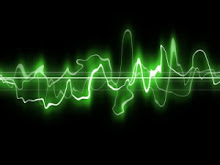When Tricky’s trip hop took us yesterday into such unexpectedly dark and menacing places, without losing a skerrick of its composure, I was reminded yet again of how wonderfully multilayered the moods and shades of music can be. Music seems, like no other form of human expression, to be able to capture so much, so many things, all at once, to breathe hot air and cold air onto you in the one breath, to soothe you and unsettle you with the one handstroke, to arouse you and poison you with the one kiss.
These ambiguities and strange interactions occur in all of music’s cultures and periods and genres but, arguably, those musicians who have played with their art on the edges of convention, the experimentalists in music, have often achieved this in the most stunning and striking ways. Not that all experimental music is about creating those ambiguities but, when experimental music does it, it often does it very, very well.
Which leads me to today’s music – the 1970s Cologne-grown krautrock band, Can and their classic 1971 release Tago Mago.
A predecessor to my now obsessively-compulsively favourite musicians, Einstürzende Neubauten (see 17th February, 7th February and 3rd February), Can use music, where weird electronic sounds fuse with more conventional instruments, to create and sustain finely nuanced moods, but moods that always feel just a little out of the normal scheme of things, like what you might feel in space, slightly disembodied, slightly other-worldly. It creates a strange effect on you, one part freaky, one part soothing and, here on Tago Mago, Can exploit to the full their ability to play with your senses.
When the album opens with ‘Paperhouse’, the music could almost be mistaken for conventional rock, with its guitar riffs, singing and screeching above a steady, forceful beat – but, when you start to see the ways the music builds upon its elements, taking a fragment of a phrase here, or bit of a beat sequence there, and uses them as little bricks that, replicated, build the real structure of this music, you realise that there is nothing conventional about this music at all and that, even in 1971, when rock was still in its youthful days, Can were breaking ranks and doing their own thing. The pace speeds up and slows down – and you know, even here, on the opening track, that this is an album that calls you in for the long haul.
In ‘Oh Yeah’, with its thunder and rain opening, making way for that hypnotic, beat and those long, sustained electronic chords, you know that you are slap bang in the heart of 70s krautrock. But then, just as the music has you trapped in its gaze, ominous keyboards intrude from nowhere and everything halts, if only for a second or two, before the hypnosis returns, now a little darker, a little more sinister, than it was before. Nothing here stays as you expect it to for long.
Tago Mago’s centrepiece is ‘Halleluhwah’, over 18 minutes long, and both the emotional and the musical core of the album. The mesmerising electronics bubble away in the background, creating a creepy, uncanny feel where the musical styles above it and around it come from all directions. From nowhere, a piano pops in for a few seconds, tinkers away as if it was in a jazz bar; electronic noise hovers and buzzes in the ambience while the funky drumbeat continues, unfazed; the guitars riff away, in the shadows of rock, unbridled, untamed; vocals come and go, sometimes seeming to chant some tribal incantation from another place, another time. It’s all weird and strange, like dreams where unlikely images appear, uninvited, unexpected and unrelated, making their own kind of sense.
‘Aumgn’ and ‘Peking O’ both take you into pretty creepy territory, with strange vocals – groaning in ‘Aumgn’, babbling in ‘Peking O’ – eschewing everything conventional in rhythm and melody; music that is cool, cold even, but haunted to the point that, when you listen to it, it’s hard to resist the temptation to look over your shoulder and reassure yourself that no one is there. For a while the curtains seem to part in ‘Peking O’, opening to a new view of things, still exotic, still weird, but somehow now more fascinating than freaky, despite its bits of grotesque gabble, its screeches and screams, tottering on the edge of madness. Here we have moved far outside of the boundaries of conventional music and yet every sound, every beat, every pitch, is placed just where it needs to be, orchestrated with the care and precision of the most intricately designed symphony.
‘Bring Me Coffee or Tea’ ends the album in a calmer place, where the music settles down a little, chilled out and at ease with itself, yet still holding you in its gaze, its hypnotic repetitions of little fragments of phrases, not quite minimalist, but magnetic and mesmerising just the same, and just as much.
Even more than their contemporaries Kraftwerk, Neu! and Tangerine Dream, Can broke open a lot of the musical boundaries of the day, and helped pave the way for a whole new stream of modern music, one where both classical and non-classical innovators got music to do things that it had never done before. But it’s not only their daring innovation that made Can so important – it was also their ability to remember the importance of engaging their audiences, of speaking to them at a level that resonates with the way people think and feel.
With sounds and rhythms and tonalities that had never been heard before, Tago Mago touches emotional and psychic crevices that have always been buried, criss-crossed, deep inside every human being.
Subscribe to:
Post Comments (Atom)


No comments:
Post a Comment